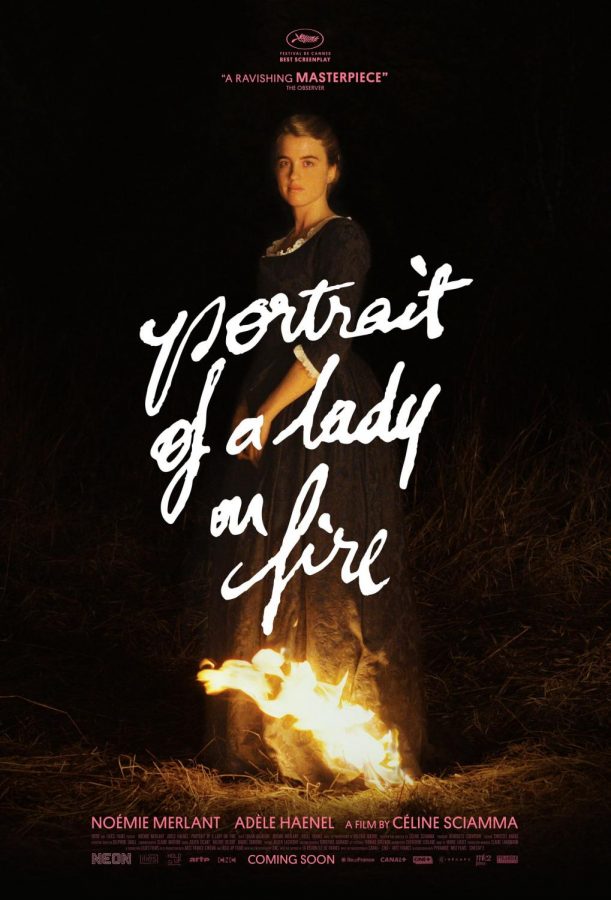‘Portrait of a Lady on Fire’ says ‘bonjour’ to American theaters
Céline Sciamma creates a love story surrounding a painter and subject.
American cinemas are not accustomed to French films, even after the 2001 French movie Amelie, which captivated audiences across the nation. On Feb. 14, almost 19 years after Amelie, director Céline Sciamma widely released her romance film Portrait of a Lady on Fire (Portrait de la jeune fille en feu).
Set in 1770 France, the story follows a painter named Marianne who travels to a secluded beach and has to paint a portrait of Héloïse, a young woman who is to be wed to a man in Milan. In the original screenplay, Héloïse and Marianne slowly become accustomed to each other over the span of two weeks and eventually fall in love. The pair now must face the challenges of their social classes, as well as the societal rules.
The film was actually inspired by Céline Sciamma and Adèle Haenel, who plays Héloïse in the movie. The screenplay mimics the rise and fall of the couple’s relationship. Sciamma even refuses to answer some questions due to it being so personal to her. Throughout the film, she slips in certain hidden gems that were significant to the real relationship, like the number 28, which was the age of Sciamma when she first started dating Haenel.
A large part of the film focuses on the female gaze. Most romance films use the male gaze, a term used to a man’s sexual intention through the eyes. Since this movie is a fully female cast, with the exception of one man for less than one minute, Sciamma decided to focus on the female gaze, which reflects a woman’s emotions rather than sexual desires. The director specifically chose actresses with large eyes to fully get the female gaze point across to the audiences.
Just like the meaning behind the movie, the cinematography in Portrait of a Lady on Fire is just as complex. Using advanced technology, every scene in the motion picture is able to look like an actual painting. The simple setting coupled with the costumes come together and create scenes that are pleasing to the eyes.
A unique aspect of the film is that it virtually has no real score to it. Instead,Sciamma uses the sound of natural elements to show the relationship of Marianne and Héloïse. Whenever tensions rise between the two characters, the waves along the island crash harder, or the fire’s crackle increases volume. Sciamma only uses two songs in the entire film, an original song and ‘Concerto For Violin And Strings’ by Antonio Vivaldi.
Although the movie’s story is vital, it would not come to life without the actresses. Adèle Haenel (Héloïse) and Noémie Merlant (Marianne) acting are breathtaking. The dynamic duo depicts a relationship that will last centuries. Merlant portrays her character of a painter beautifully by mimicking common motions of an artist like the small twitches of the hand. Haenel’s acting stands out in the last scene, and although not demanding, it shakes the audience.
The movie was released worldwide on Valentine’s Day, but there was a limited release in Dec. 2019, making it eligible for the Oscars that took place on Feb. 9. Unfortunately, the film was snubbed and wasn’t nominated in the best international film category. On the bright side, it was nominated for 109 awards and won 36 of them, including Best Screenplay at the Cannes Film Festival which was followed by a standing ovation that lasted more than 10 minutes.
Sciamma has created a romance story that will last ages and impact audiences across the country. Portrait of a Lady on Fire has possibly opened the doors for more French movies to infiltrate American cinemas.

Hobbies/interests: Playing guitar and painting
Fav artist: Queen
Movie you never get tired of watching: Jurassic Park
Goal for the year: Making...













